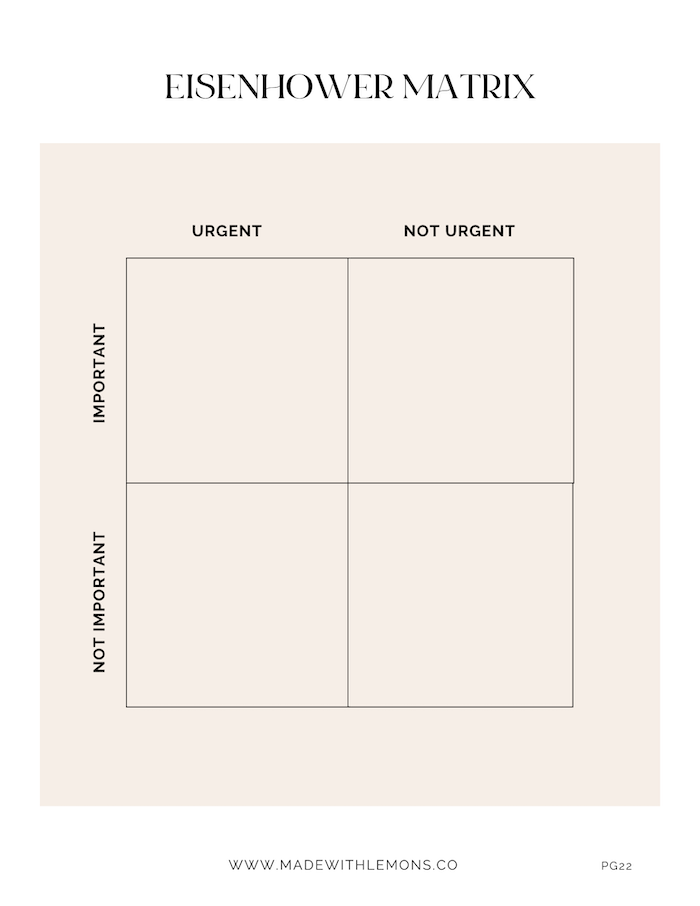
Do you ever feel like you can’t take a day off from your business? Like every second spent resting is money down the drain? If so, you’re not alone. But as an entrepreneur, you have the power to make your own schedule, set boundaries in your business, and work less without sacrificing your income. Here’s how to work less and make more.
The Productivity Trap
As a society, we’re more productive than ever before. We work long hours, take our work home with us, and start side hustle after side hustle. Like Celeste Headlee wrote in her book Do Nothing, hose in the corporate world treat our offices like our homes, and those of us running our own businesses unknowingly allow our work to seep into our homes.
This kind of lifestyle steals time and energy from our personal lives. As entrepreneurs, we often explain away our long hours and “hustle” lifestyle. But just because you run your own business doesn’t mean you can’t prioritize your personal life, nor does it mean you have to sacrifice your income to create balance.
4 Steps to Work Less And Make More Money
Ready to create more balance in your business without sacrificing your personal income? Get started with these four steps.
STEP 1: Utilize the Eisenhower Matrix.
Speaking of decluttering, it’s time to tackle your to-do list! Many new coaching clients come to me with full to-do lists and packed calendars. Even when they’re checking off tons of tasks, they don’t feel like they’re making progress towards their goals. In short, they’re stuck in the productivity trap.
My favorite tool for helping clients declutter their to-do lists is the Eisenhower Matrix. Basically, you write down every little thing you need to do and then categorize those tasks into one of four quadrants:
Quadrant 1: Urgent & Important
These are the tasks that absolutely need to get done ASAP. These have urgent due dates and move your business forward. Keep these on your to-do list.
Quadrant 2: Not Urgent But Important
These are the tasks that move your business forward but don’t need to get done right away. Move these to another week when you have less on your plate.
Quadrant 3: Urgent But Not Important
These tasks need to get done ASAP, but they don’t necessarily need your attention. These might be things that you could delegate to a team member or automate with a CRM. Find a way to delegate or automate these tasks.
Quadrant 4: Neither Urgent Or Important
These tasks don’t need your attention, now or ever. They don’t move your business forward, nor do they get you closer to your personal goals. Remove these from your to-do list.

Every week, sit down with your to-do list and this matrix. You’ll be surprised how many tasks you’re able to delegate, automate, or ditch in a single week! That makes more time for you to get important work done, practice self care, or just rest. And even if you have to hire a team member to help with your urgent but unimportant tasks, chances are you’ll find you still make more money in the long run.
STEP 2: Set firm boundaries.
When I sit down with a new coaching client who says they’re working too much, I can usually count on one thing to be true: They lack boundaries.

Without firm boundaries between work and home, your business is bound to bleed into your personal time. It starts with a few emails as you lie down for bed, and before you know it you’re taking meetings outside of office hours and working late into the night. It’s a slippery slope.
To prevent work from eating up your personal time, you have to create stronger boundaries. Start by…
- Setting yourself strict “office hours.” I always suggest giving yourself standard “clock in” and “clock out” times, just like you’d have in a corporate position. And once you set that schedule, stick to it! When it’s time to clock out for the day, set your work aside and devote your attention to your friends, your family, and yourself.
- Communicating your boundaries with your team and clients. Whatever boundaries you set for yourself, be sure to communicate them clearly. This might mean putting your office hours or workdays in your email signature or letting your clients know you only check your email once a day. If your clients and team know about your boundaries from the start, they’ll be less likely to try to push the limits and you’ll be less likely to fudge your own rules.
- Limiting your daily to-do lists. Here’s the thing: We almost always overestimate how much we can get done in a day. Instead of packing your to-do list with a dozen tasks, limit it to the 3-5 things that have to get done today. If you complete that list halfway through your day, you can use the extra time to get started on more long-term projects or take some time off.
- Blocking off time in your calendar for self care. This is my number one tip for overworked entrepreneurs. Every week, block off time in your calendar for real, intentional self care. You can even label it with the kind of self care you want to practice, like “Go for a walk” or “One hour of yoga.” Once it’s in your calendar, treat it like an actual appointment. It’s harder to skip self care when it’s built into your schedule.
Remember: Setting boundaries is easy, but keeping them is hard. Check in with yourself every so often to make sure you’re sticking to your rules and giving enough attention to your non-work life.
STEP 3: Create systems.
At the end of the day, your business can’t rely on people alone. We’re only human; we need to take breaks, be there for our families, and nurture our non-work passions. If your business relies solely on you, you’ll never be able to step away from it.
So instead of carrying the entire weight of your business alone, create systems to disperse the energy and do the heavy lifting when you can’t. Whether these are systems that run entirely on their own (like a CRM or invoicing software) or routines in your daily life, their purpose is keeping you on track and preventing burnout down the line.
If you don’t have these systems already, start here:
- A CRM, or Client Relationship Management program, like Honeybook or Dubsado. For a monthly fee, these programs will automatically send invoices, schedule meetings, and manage client communication–all while you work on more important, big picture tasks.
- Weekly “money dates.” This is a regular meeting you set with yourself to look over your bank accounts, categorize your expenses, organize receipts, and pay bills in your business. If you stay on top of your business finances, a week or two away of vacation won’t derail your plans.
- CEO days where you work on your business instead of in your business. Use these days to make progress on long-term goals, do pesky administrative work, and brainstorm ways to scale your business.
There’s no limit to the systems you can create in your business, and the better your systems, the more time and energy you’ll be able to spend on other things.
Like this post?
Sign up for our weekly newsletter and we’ll send you more awesome posts like this!
STEP 4: Work in alignment with your ‘why.’
Working less and living more is all about prioritizing the work that gets you closer to your vision for your life. As you implement the previous three steps, you’ll start working more in alignment with your why instead of getting bogged down in unnecessary or unfulfilling tasks.
Simon Sinek’s book Start With Why does a great job of explaining why all entrepreneurs should define their why and keep it close. He explains that your why is the reason you became an entrepreneur in the first place, the reason you do what you do. When you know your why, you can make all your decisions in a way that get you closer and closer to the life you want to live.
To define your own why, start by asking yourself these questions:
- What drove you to start your own business? Did you want more free time? More personal income? To make a positive impact on the world?
- What kind of life do you want to live one, five, or ten years from now? Do you want to have the time and money to travel? Maybe you want to own a house? Do you want to have kids and enough money to treat them to vacations?
- What kind of impact do you want to have on the people around you? Do you want to help other people further their careers? Do you want to uplift your community?
Setting goals and imagining your dream life may seem counterintuitive to working less, but trust the process! When you know your why, it’s easier to cut through the clutter and focus on what truly matters.
Want to get more done for your business and spend more time on yourself?
There’s no better time than now to build a business that lets you live the life of your dreams. Download my FREE guide, 15 Life-Changing Habits To Help You Be More Productive In Business, or get my exact roadmap to switching off guilt-free and finally reclaiming your time, to get started.






+ show Comments
- Hide Comments
add a comment